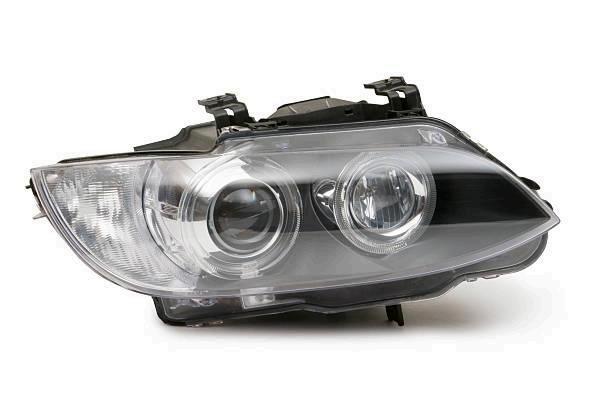

The Ultimate Guide to Automotive Headlights:
Everything You Need to Know
Automotive headlights play a crucial role in vehicle safety, design, and performance While many drivers may not give them much thought beyond switching them on at night, headlights have undergone a remarkable transformation over the decades from simple sealed beams to advanced LED and laser technologies In this guide, we’ll explore the different types of automotive headlights, their benefits, maintenance tips, and how to choose the right ones for your vehicle.

What Are Automotive Headlights?
Automotive headlights are front-facing lights mounted on vehicles that illuminate the road ahead during low-light conditions. Their primary function is to ensure visibility for the driver and make the vehicle more visible to other road users. Headlights are a legal requirement in all vehicles and are essential for safe driving, especially at night or in adverse weather conditions
Modern automotive headlights are more than just light sources they are crucial components in vehicle design and safety systems
Types of Automotive Headlights
Over the years, various headlight technologies have been developed, each offering unique advantages Here are the most common types:
1. Halogen Headlights
Halogen headlights are the most commonly used type due to their low cost and ease of replacement These bulbs use a tungsten filament and halogen gas to produce light
Pros:
● Affordable
● Easy to replace
● Widely available
Cons:
● Lower brightness
● Shorter lifespan
● Less energy-efficient
2. Xenon (HID) Headlights
High-Intensity Discharge (HID) or Xenon headlights produce light by creating an electric arc between two electrodes.
Pros:
● Brighter than halogen
● Longer lifespan
● Wider light coverage
Cons:
● Can cause glare
● More expensive
● Require a warm-up time
3. LED Headlights
LED (Light Emitting Diode) headlights have become popular in modern vehicles due to their energy efficiency and design flexibility
Pros:
● Bright and energy-efficient
● Long-lasting
● Instant on/off
Cons:
● Higher upfront cost
● May require special housing
4. Laser Headlights
Laser headlights are a relatively new innovation in the automotive industry. They produce intense light and are typically found in high-end luxury vehicles
Pros:
● Extremely bright
● Longer range
● Compact design
Cons:
● Very expensive
● Complex technology
Choosing the Right Automotive Headlights
Selecting the right automotive headlights depends on several factors, including your driving needs, budget, and vehicle compatibility
Consider the Following:
● Brightness: Choose a headlight that provides adequate illumination without blinding other drivers
● Color Temperature: Measured in Kelvin (K), the color temperature affects visibility Around 4,000K–6,000K provides a balance of brightness and comfort.
● Lifespan: LED and HID lights last longer than halogen
● Legal Regulations: Make sure the headlights comply with local laws and regulations
● Compatibility: Check your vehicle’s make and model to ensure the headlights fit properly
Benefits of Upgrading Your Automotive Headlights
If your current headlights are dim, outdated, or frequently failing, it might be time for an upgrade Here are some benefits:
1. Improved Visibility
Modern headlights offer brighter and wider coverage, making it easier to see pedestrians, animals, and road signs
2. Enhanced Safety
Better headlights help reduce the chances of nighttime accidents by increasing your reaction time and awareness.
3. Stylish Appearance
LED and laser headlights can give your vehicle a modern and sleek look, often boosting its resale value.
4. Energy Efficiency
Upgraded headlights consume less power, which is beneficial for your car’s battery and fuel economy
Maintaining Your Automotive Headlights
Proper maintenance is key to ensuring your headlights perform at their best. Here are some tips:
● Clean Regularly: Dirt and grime can reduce light output. Clean the headlight lens with a mild cleaner
● Replace in Pairs: When one bulb burns out, the other is likely to follow soon Replacing both ensures balanced lighting.
● Check Alignment: Misaligned headlights can reduce visibility and cause glare Have them professionally adjusted if needed.
● Inspect for Cracks or Fogging: Damaged or foggy lenses can scatter light Consider using a headlight restoration kit or replacing the lens
Common Headlight Problems and Solutions
Even the best headlights can run into issues Here are some common problems and how to fix them:
● Dim Lights: May be caused by aging bulbs or dirty lenses Try cleaning or replacing the bulbs
● Flickering Lights: Could indicate a wiring issue or a failing bulb
● Condensation Inside the Lens: Often caused by broken seals Replacing the lens or sealing it properly can help.
● Burned Out Bulbs: Simply replace with compatible ones preferably in pairs
Future of Automotive Headlights
The automotive lighting industry is evolving rapidly, with exciting innovations on the horizon:
● Adaptive Headlights: These adjust their direction and intensity based on driving conditions, improving safety
● Matrix LED Systems: Allow precise control of light patterns, reducing glare for oncoming traffic.
● Smart Integration: Future headlights may integrate with GPS and AI to predict road conditions and automatically adjust illumination
Final Thoughts
Automotive headlights are far more than basic lighting tools they're essential safety components that evolve with technology. Whether you're looking to upgrade your current setup or simply maintain what you have, understanding your options and needs is key. With the right headlights, you not only drive safer but also enjoy a more comfortable and stylish ride
